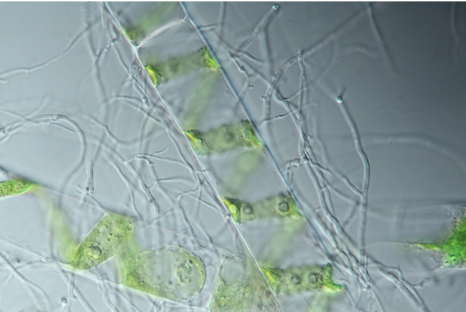Fungal Interactions With Algae
Symbiosis literally means: “together-living” and symbioses occur along a continuum ranging from mutualistic through commensal and endophytic to parasitic interactions. One of the most well-known symbioses between fungi and algae is a lichen. In a lichen, one or more autotrophic, photosynthetic, algae (photobiont) live together with heterotrophic fungi (mycobiont). The fungal partner of a lichen is typically an Ascomycete or Basidiomycete, although it is likely that two or more fungal species interact to form a lichen. Intriguingly, lichens often display their own specific morphology with properties that differ from those of their component organisms, and appear in many colors, sizes, and shapes. Lichens are pioneers and can grow under harsh conditions and in some of the most extreme environments, such as alpine elevations, arctic tundra, deserts, and rocky coasts. Whereas lichens can reproduce vegetatively, the mycobiont can also reproduce sexually, often in fruiting bodies such as apothecia. However, following dispersal, such fungal sexual spores will have to encounter a compatible algal cell to form a functional lichen.

